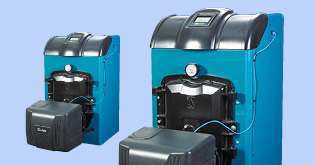- My Account:
- Sign In
- Register
- Make Payment

Ductwork 101: Homeowner’s guide to HVAC ducting.
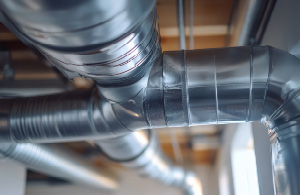
When it comes to keeping your home comfortable and indoor air clean, few systems are as essential as your HVAC ductwork. It’s easy to overlook, but your ductwork is the hidden network behind your heating, ventilation, and air conditioning system that delivers warm or cool air throughout your home. In this guide, we’ll walk you through everything homeowners need to know about HVAC ducting, from understanding how it works to signs that it’s time for an upgrade and how it can directly impact your indoor air quality (IAQ).
What is ductwork in HVAC systems?
Ductwork is the system of metal or flexible tubes that transports air from your HVAC unit to each room in your home. Think of it as the circulatory system for your home's comfort. It includes:
- Supply ducts: Deliver conditioned air into rooms
- Return ducts: Pull stale air back into the HVAC system to be reconditioned
- Vents and registers: Control the direction and volume of airflow
Properly designed residential ductwork helps maintain consistent temperatures, reduce energy costs, and improve your home’s indoor air quality. Learn more about our HVAC services here.
Types of air ducts.
There are several types of ductwork, each with its pros and cons:
Flexible ducts
- Lightweight and easy to install
- Great for tight spaces
- Can be prone to damage or kinks that restrict airflow
Sheet metal ducts
- Durable and mold-resistant
- Commonly made of galvanized steel or aluminum
- Ideal for long-term performance
Fiberglass-lined ducts
- Offer sound-dampening and insulation
- May deteriorate over time, leading to debris and allergens in your air
Fiberboard ducts
- Made from compressed fiberglass
- Budget-friendly but less efficient for airflow
Choosing the right type of ductwork can enhance efficiency and improve IAQ.
How do air ducts work?
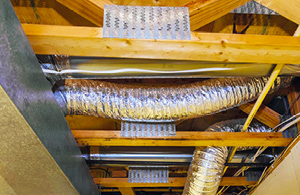
Airflow begins with the HVAC system drawing air through the return ducts. This air is filtered and conditioned before being pushed through supply ducts into your living spaces. A well-balanced system can allow each room to maintain the desired temperature while supporting healthy air circulation.
Curious about IAQ? Explore our indoor air quality FAQs.
Signs your ductwork needs repairs or replacement.
How can you tell if your ductwork is underperforming? Look for these red flags:
- Rooms that are too hot or too cold
- Strange noises like banging or whistling from your vents
- Unusual increase in energy bills
- Moldy or musty smells
- Dust is collecting around vents
Issues like these might indicate it’s time for duct cleaning, sealing, or replacement. Check out our IAQ system options.
Common ductwork installation issues.
A poor duct installation can lead to long-term inefficiencies, including:
- Undersized ducts are causing poor airflow
- Leaky joints waste energy
- Ineffective placement reduces system performance
- Subpar materials are deteriorating quickly
A professional installation ensures your system operates at peak efficiency. See how Petro can help.
Common air duct wear and tear signs.
Over time, even well-installed ductwork can show signs of aging:
- Disconnected or sagging ducts
- Visible rust or corrosion
- Degraded insulation
- Evidence of pests
Routine maintenance can help you spot and fix these issues early. Learn about the benefits of IAQ systems.
Ductwork FAQs.
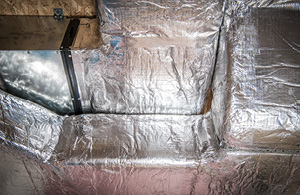
How much does it cost to install central air with ductwork?
Costs will vary depending on home size and duct complexity. Please contact us for an estimate.
How to insulate ductwork?
Use foam or fiberglass insulation around duct exteriors and seal joints with mastic.
How to clean ductwork?
Professional cleaning every 3–5 years is best.
How much does it cost to replace ductwork?
Replacement costs will vary depending on materials, location, and access. Please contact us for an estimate.
How long does it take to install central air with existing ductwork?
Typically 1–2 days, depending on your system.
How to install ductwork?
An HVAC technician can develop and plan the layout, measure for airflow needs, seal all joints, and insulate.
How to size ductwork?
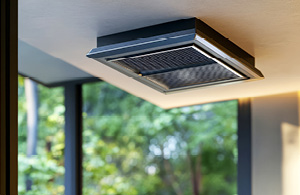
An HVAC technician runs calculations to consider airflow needs and room size to determine optimal duct sizing based on Manual D regulations and guidelines from the Air Conditioning Contractors of America (ACCA). You can review those guidelines here.
How much does ductwork cost?
Costs vary based on material and complexity. Please contact us for an estimate.
How to hide ductwork in the basement?
Options include drop ceilings, soffits, or painting to blend with surroundings.
Why is my ductwork sweating or dripping water?
This is usually caused by condensation. Insulate and seal ducts to fix it.
Why is there ice on my ductwork or AC lines?
It could be low refrigerant or restricted airflow. Call a professional for inspection.
Why does my ductwork make banging noises?
Thermal expansion or loose fittings are often the culprits. Insulating and securing ducts can help.
How long does ductwork last?
Well-maintained ductwork can last 20–25 years.
How to seal ductwork?
Apply mastic sealant or foil-backed tape at all connections.
Contact Petro Home Services for your indoor air quality needs.
Your HVAC ductwork is crucial not only for maintaining a comfortable temperature in your home but also for supporting good indoor air quality. Whether you need cleaning, repairs, or a full duct replacement, Petro Home Services is here to help.
Contact your local HVAC pros at Petro today to learn more about our professional HVAC services and indoor air quality solutions.
Petro Home Services is proud to not only serve communities in DC, CT, MA, MD, NJ, NY, PA, and RI but we also proudly acknowledge the skills and experience of our expert team behind all resources. With insights on topics ranging from heating oil facts to common air conditioning questions, you can rely on Petro Home Services for facts and information to help you understand more about your heating, cooling and home comfort needs. This article and all articles on the Petro Home Services website have been approved by our team of home service experts.


